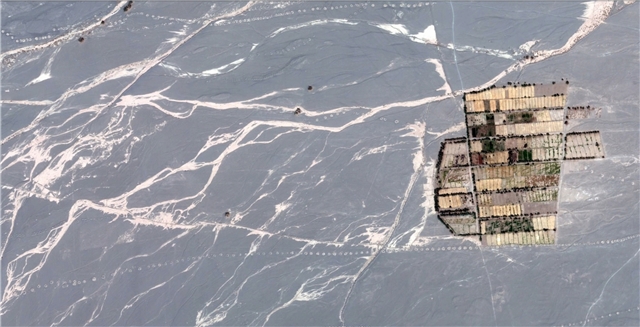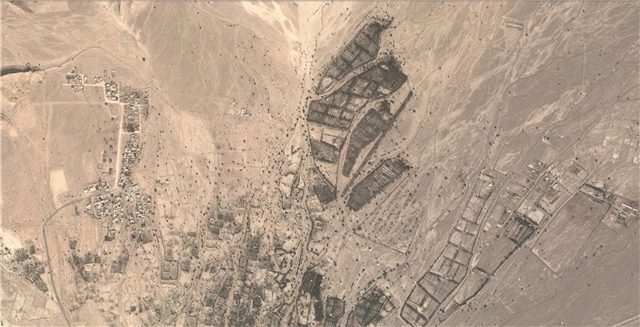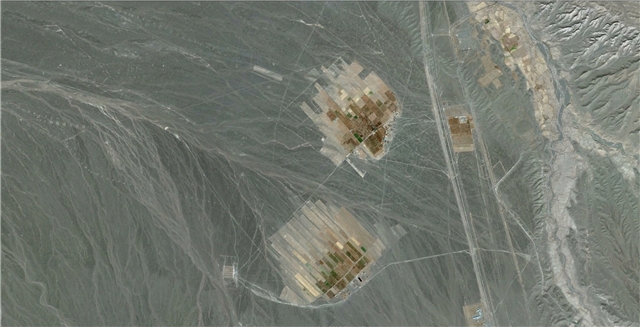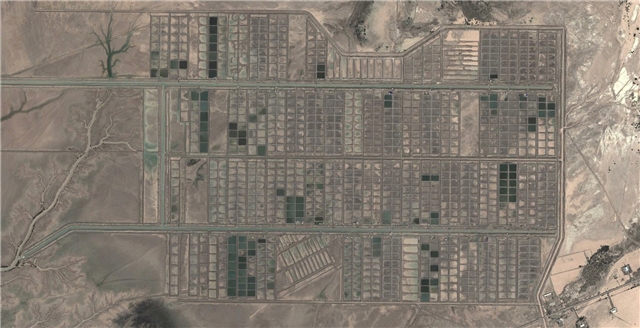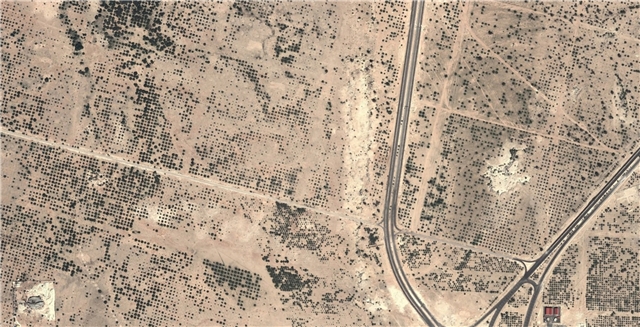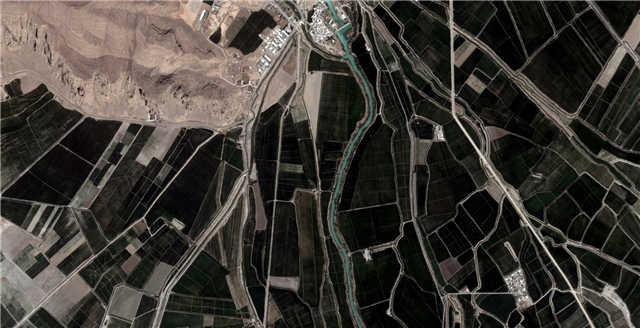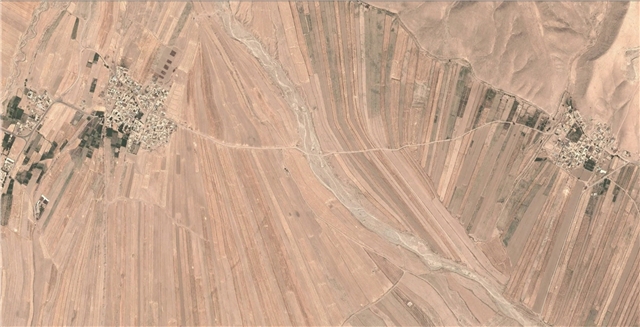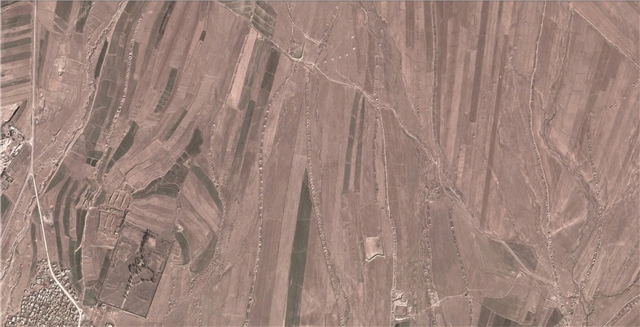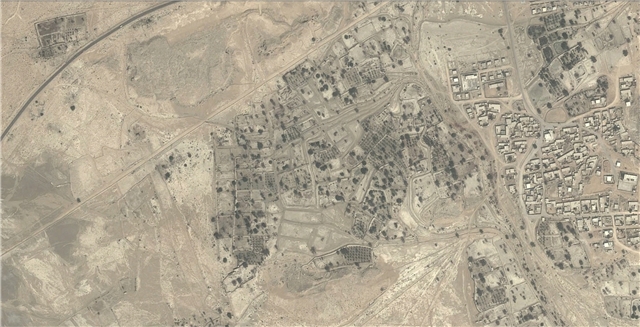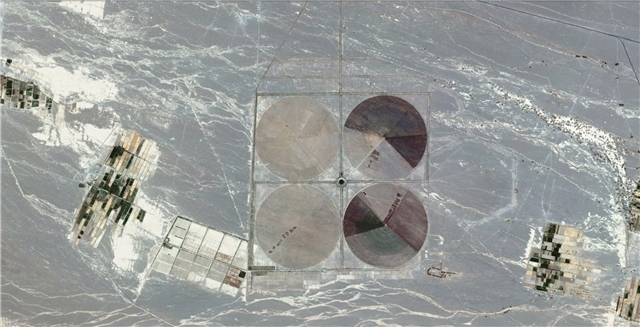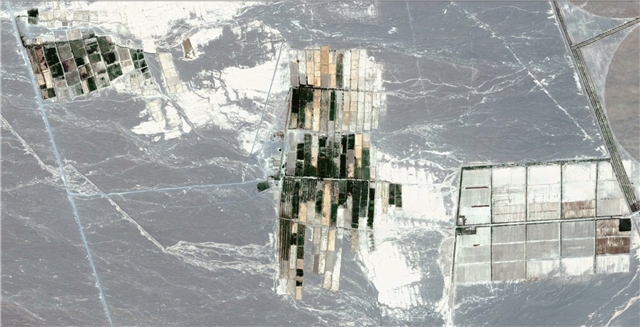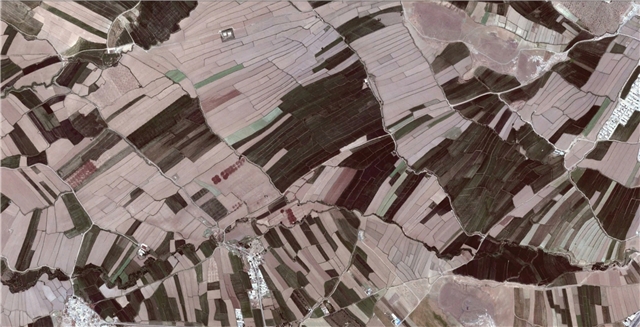Los Jardines Imposibles es un projecto de investigación en fase inicial que estudia diferentes morfologías de paisajes agrícolas en la Meseta Iraní. La aridez del territorio iraní ha consitutido históricamente una severa limitación para la agricultura y, por tanto, la región ha requerido del desarrollo de una amplia variedad de estrategías agrícolas y técnicas horticultoras para conseguir que la tierra sea productiva. El resultado de la implementación de estos recursos ha convertido a la meseta iraní en un catálogo de patrones de paisaje agrícola, a menudo claramente delineados en contraste con la dureza de la geografía circundante. Estas áreas bien demarcadas y de gran exuberancia vegetal -los oasis- han constituido, durante siglos, la imagen del paraíso para la civilización persa y los sucesivos habitantes de la región, y han sido fuente de inspiración formal para toda una tradición de diseño de jardines en la región. Este proyeco explora los patrones formales de estos territorios productivos en relación, por una parte, con los métodos agrícolas involucrados en su consecución, y en relación, por otro lado, con la variedad de condiciones geográficas existentes en la región.
Before the appearance of human factors over the land, there is a physical geography that results from the action of atmospheric forces over the geological structure of the soil. Human settlement implies, in most cases, a notable transformation of that physiography, through the deployment of a wide range of infrastructural maneuvers in order to make the land purposely productive. Some of these transformations are strictly agronomic, that is, they have to do with the cultivation of different life forms in the territory. In this sense, Persian and Islamic agronomic traditions are particularly relevant, because the aridity and harshness of their territories demanded the develpment of a wide catalog of agricultural strategies and horticultural techniques that sought to increase the quality and productivity of the soil. Most of this agronomic knowledge implied much higher levels of management, such as the qanat networks, superficial irrigation, new plant associations, crop rotations, introduction of new crops and growing procedures associated to them… Indeed, arid territories like the Iranian Plateau are amongst the most demanding environments in terms of agricultural production, but also amongst those that evidence best the extraordinary ecological transformations that agricultural management introduces in the landscape: the Iranian Plateau certainly offers a stunning array of agricultural landscape patterns, often clearly delineated in contrast with the harshness of the surrounding physiography. These demarcated areas of plant exuberance is what we call oases, which appear as islands in the desert, discreet and conspicuous elements within a fluid and continuous background condition. Oases, to put it in Vittorio Gregotti’s words, “establish a cosmic order around the surrounding chaos of nature” and, therefore, become exemplary tropes of anthropogeographical landscapes. The historiography of the science of agronomy also shows that the systematization and purposely elaborated forms of the agricultural landscapes eventually reached an aesthetic dimension that transcended the productive, technical and economic ones. Oases have represented for centuries the image of paradise to the Persians and later settlers, and have embodied the source of inspiration of a whole tradition of garden design in the region.
Iranian agricultural landscapes constitute an extraordinary example of sustainable design, for they exist –and, in some cases, have existed largely unaltered for centuries– by virtue of a series of ecological and technological achievements that have allowed the cultivation of life under extremely severe conditions. These landscapes utilize with unparalleled efficiency the minimum doses and flows of energy available in the environment, and constitute a fragile but nevertheless durable challenge against desertification, a phenomenon that begins with absence of vegetation and soil erosion to culminate with the decline of economies and cultures. Although desertification is often associated with arid regions, experience has proven that it can actually occur in any environment. Iranian oases can provide useful insights about successes and failures in lands management for other regions of the world, and help to expand the catalog of landscape typologies that constitute the source of inspiration of most contemporary landscape architecture design, disproportionately informed by examples from more humid latitudes.



